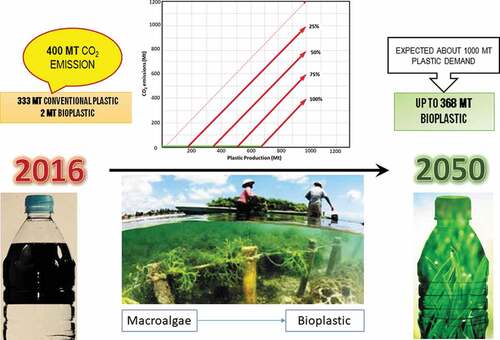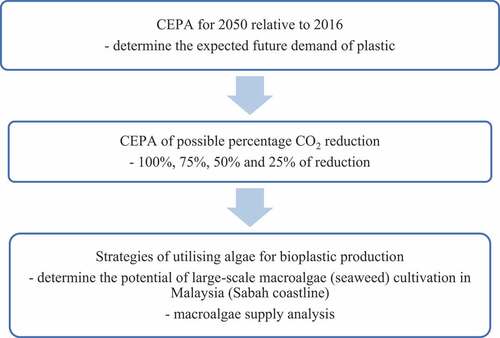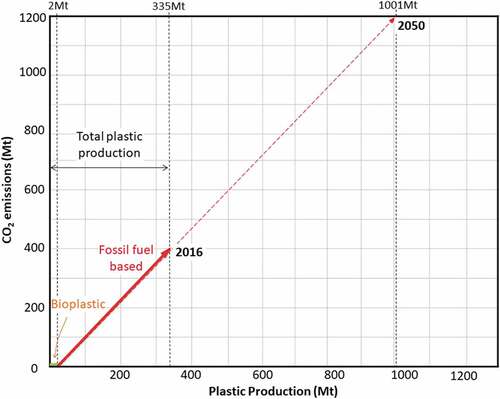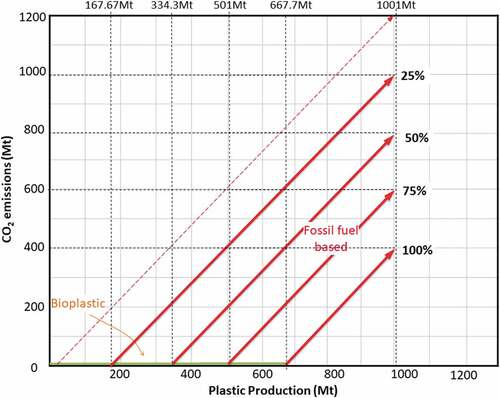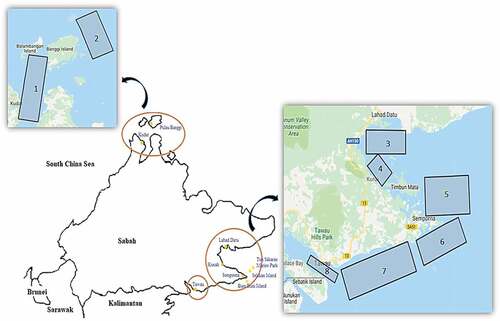Figures & data
Table 1. Global greenhouse gas emission in 2016 and 2050
Table 2. Carbon reduction and the expected bioplastic production demand
Figure 4. Carbon emission pinch analysis (CEPA) for (a) 100%; (b) 75%; (c) 50%; (d) 25% CO2 emission reduction
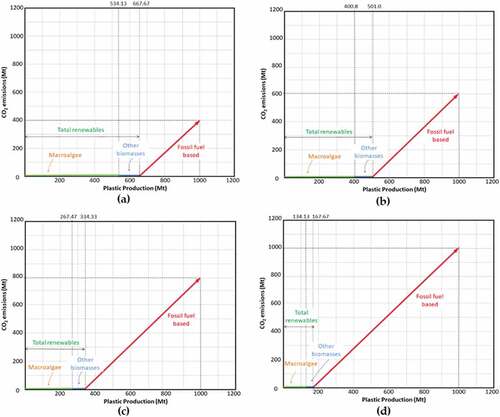
Table 3. Carbon reduction and the expected bioplastic production demand from macroalgae
Table 4. Total area for large-scale macroalgae (seaweed) cultivation in Sabah
Table 5. Large-scale cultivation method and expected contribution for bioplastic production

